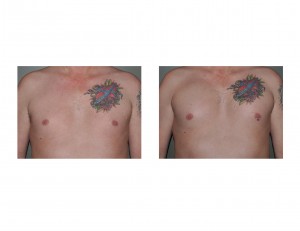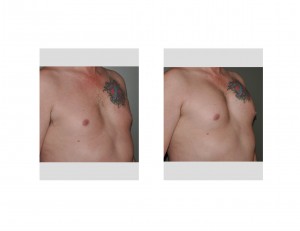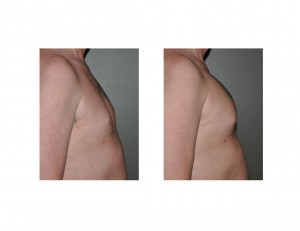Background: One sign of masculinity is the size and shape of a man’s chest. This has been so since antiquity and is evidenced today from comic book characters to body building and muscle supplements. The one largest tissue component that gives a male chest its features is the pectoral muscles.
The pectoral muscle is a very large fan-shaped muscle that extends from an attachment from the upper arm bone to the clavicle and outer edge of the sternum across the chest area. It is a triangular-shaped muscle whose lower border, running from a line from the upper arm to the lower chest, creates a well-defined lower pectoral edge. The size of the muscle, primarily defined as its thickness, is what creates the pectoral outlines and amount of projection.
For men who want an immediate solution to increased pectoral size and definition, pectoral implant surgery can be done. This would be appropriate for those men who can not get the pectoral size they want despite exercise or for those men who simply do not have the time or desire to achieve it by exercise-induced muscular hypertrophy. Pectoral implants come in a variety of shapes and thicknesses to fit just about any man’s chest shape.
The placement of pectoral implants in men is very similar to female breast augmentation in many filled device. It is a solid silicone implant that is incredibly soft and flexible, very similar in feel to that of natural muscle. Like transaxillary breast augmentation, the implant is placed through an incision high up inside the armpit. The exact placement of a pectoral implant in relation to the muscle is also different. While breast implants release and go below the lower pectoral muscle border, it is extremely important that pectoral implants do not. The goal of pectoral implant placement is to keep it entirely in a submuscular location which will help to push the entire muscle forward as well as keep its natural muscular outline.
Case Study: This 46 year-old male wanted pectoral enlargement. He freely admitted that he had long wanted it but did not want to make the effort to try and achieve it by exercise. He had tried when he was younger but was never able to create much pectoral enlargement. His pectiral dimensions where 16cm width and 12cm in height at the mid-pectoral line.



Case Highlights:
• Development of the pectoral muscles in size and outline can be difficult for some men either failing to achieve their size or not having the time/committment to exercise enough.
• Pectoral augmentation is done through an armpit incision using a very soft but solid silcione elastomer implant.
• Recovery after pectoral implant augmentation takes about three weeks until one can return to all normal activities including working out.
Dr. Barry Eppley
Indianapolis, Indiana


